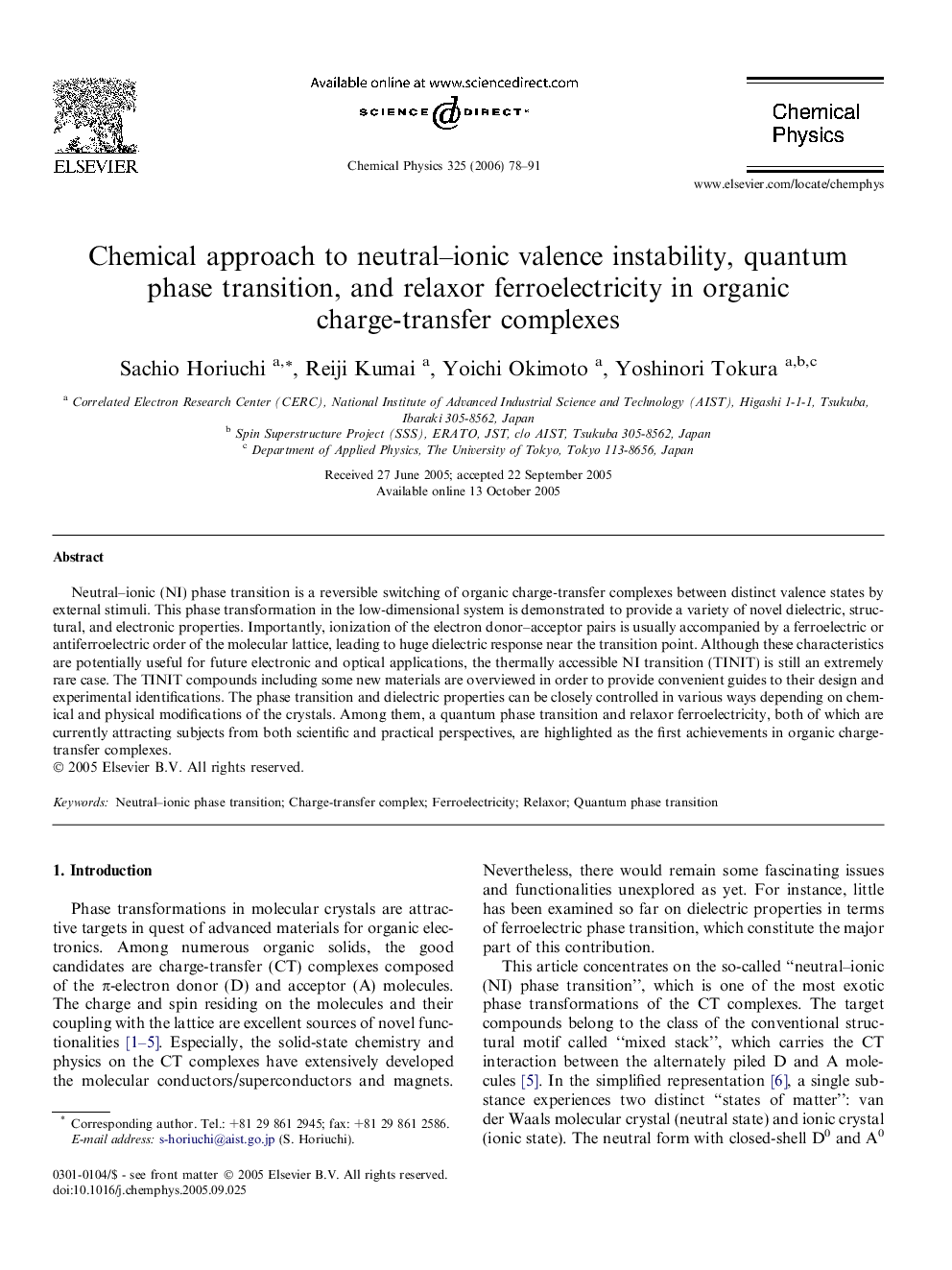| Article ID | Journal | Published Year | Pages | File Type |
|---|---|---|---|---|
| 5377114 | Chemical Physics | 2006 | 14 Pages |
Abstract
Neutral-ionic (NI) phase transition is a reversible switching of organic charge-transfer complexes between distinct valence states by external stimuli. This phase transformation in the low-dimensional system is demonstrated to provide a variety of novel dielectric, structural, and electronic properties. Importantly, ionization of the electron donor-acceptor pairs is usually accompanied by a ferroelectric or antiferroelectric order of the molecular lattice, leading to huge dielectric response near the transition point. Although these characteristics are potentially useful for future electronic and optical applications, the thermally accessible NI transition (TINIT) is still an extremely rare case. The TINIT compounds including some new materials are overviewed in order to provide convenient guides to their design and experimental identifications. The phase transition and dielectric properties can be closely controlled in various ways depending on chemical and physical modifications of the crystals. Among them, a quantum phase transition and relaxor ferroelectricity, both of which are currently attracting subjects from both scientific and practical perspectives, are highlighted as the first achievements in organic charge-transfer complexes.
Related Topics
Physical Sciences and Engineering
Chemistry
Physical and Theoretical Chemistry
Authors
Sachio Horiuchi, Reiji Kumai, Yoichi Okimoto, Yoshinori Tokura,
